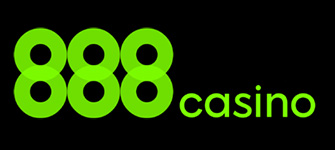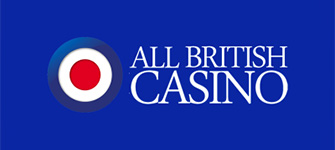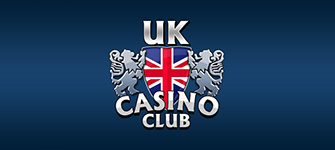Blackjack Cards and Hands Value
There are different games on the casino floor but few of them hold the appeal of the game of 21. Blackjack has a special cachet that other gambling games like baccarat, roulette, and craps simply lack. Not surprisingly, this is the most popular table game in casinos and one of the top earners for the house, along with the infamous slot machines.
What makes the game of 21 so appealing, though? The first thing that comes to mind is the game’s very simplicity. The premise of blackjack is beyond easy to grasp – players must beat the house’s representative in the face of the dealer by getting as close to 21 as possible without going over. This simple peculiarity of blackjack makes it very attractive to players as it creates the somewhat romantic notion of “us against them”.
What also adds to the game’s appeal is the fact that understanding the hand and card values in blackjack is easy and intuitive. Unlike poker, blackjack does not require memorizing any specific combinations of cards. All you need to know to play the game is the card ranking and how to add up to 21.
- ✓ The Deck and the Card Values
- ✓ Shuffling Procedures
- ✓ The Values of the Cards
- ✓ The Total of Your Hand
- ✓ Possible Playing Decisions
- ✓ The Order of Playing Decisions
Another peculiarity of blackjack that distinguishes it from other casino games is its low house edge. Players who use perfect basic strategy can reduce the house advantage to almost zero and are nearly playing a break-even game. It gets better since blackjack is, in fact, a beatable game when one knows how to count cards.
But, of course, one must learn how to crawl before they can walk. We suggest you start with the very basics if you are a blackjack novice and build up from there. In the following article, blackjack rookies will learn about the ranking of the cards, the hand totals, and the possible playing decisions you can make in blackjack.
The Deck and the Card Values
Before we go into any lengthy discussions regarding the different card and hand values, we shall clarify in brief the rules when it comes to the deck itself. The game is commonly dealt out of multiple decks, with most casinos using either six or eight full packs of cards. Vegas downtown casinos commonly utilize two decks while those on the Las Vegas Strip usually deal their blackjack games out of four packs.
Single-deck tables are available although most of them offer reduced payouts, paying at odds of 6 to 5 rather than 3 to 2 for blackjacks. Players should altogether refrain from playing 6 to 5 blackjack since this puts them at a higher disadvantage. As for the suits of the cards, these do not matter in the game of blackjack. Almost all variations of the game, except Spanish 21, and a few others, play with the complete set of 52 cards.
Short decks are used for Spanish 21 and Pontoon where the 10s of spades, clubs, diamonds, and hearts are all removed. Short-deck games, however, compensate for the removal with more liberal rules like doubling down on any number of cards, among others.
As for dealing procedures themselves, single- and double-deck games are hand-held, meaning that the dealer holds the pack(s) in their hand and pitches the cards face-down toward players’ betting spots. In this respect, hand-held blackjack kind of resembles poker.
Holding four or more decks in one’s hand is obviously impossible, which is why multiple-deck games are dealt out of what is called a “shoe”. Rather than pitching the cards unexposed towards players, the dealer would slide them one by one out of this plastic box, turn them over, and deal them to players face-up.
Shuffling Procedures
An increasing number of brick-and-mortar gambling venues are switching to shoe blackjack because the higher deck number enables the dealers to produce a greater number of hands per hour. In turn, this allows the casinos to extract more profits from players, who would lose more the more hands they play per hour due to the house edge.
Cards are reshuffled either manually by the dealers or via automatic shufflers (ASM) and continuous shufflers (CSM). The number of cards dealt before a reshuffle takes place varies between casinos and even between individual blackjack tables.
The dealer would use a colored plastic card, known as the cut card, to mark the point where the reshuffle should take place. In hand-held games, the cards usually are shuffled midway after six or seven hands, or at around 50% of the deck(s). At multi-deck tables, the dealers normally cut out a deck and a half to two decks but this all depends on the policies of the casino.
Tables that implement CSMs reshuffle after each round. The dealer places the discards into the continuous shuffler at the end of the round, so each round basically starts from a neutral shoe.
When the cards are reshuffled by the ASM or manually, the dealer would hand out the red cut card to one of the players and request them to cut the reshuffled shoe. One or more cards are then burned, which means the dealer would draw them out and remove them from play.
It is also worth noting that the players have the option to request a new shuffle before the dealer has reached the cut card. Many players ask for random shuffles when they are having a bad run.
Just keep in mind you should ask other seated players, if there are any, if they mind. Some people are superstitious and frown at random reshuffles. Most dealers are happy to accommodate such requests although it again depends on individual house policies.
The Values of the Cards in Blackjack
As for the values of the cards, these are beyond simple to remember.
- Pip cards 2 through 10 are counted according to their pip values, i.e. a 2 is assigned a value of 2, a 3 is counted as a 3, and so on, all the way up to 10.
- Court cards like the King, Queen, and Jack are all counted as 10, regardless of suit.
- The aces are the best cards for blackjack players because their value can change. They can be either 1 or 11, depending on the preferences of the player. It all depends on which of the two values helps the player’s hand total the most. If the player draws a card that could cause them to exceed 21 (and lose, respectively), the ace’s value automatically switches to 1 to prevent the bust.
Figuring Out the Total of Your Hands in Blackjack
Now that you have familiarized yourself with the different card values, it is time to talk about the hand as a whole. The game will begin by the dealer handing each player at the table two cards. Whether the cards are dealt exposed or not depends on whether you are playing hand-held or shoe games.
As you already know, the object of the game is to get to 21 or the closest without going over (or having a greater total from that of the dealer). The dealer would start distributing the cards from their left to their right. Once everyone has received their two cards, it is time to evaluate the strength of your hand total and determine what decision to make next.
You simply must add up the values of the two cards you are originally dealt. Here is an example. You start the round with 10/9 for a total of 19, in which case it would be wiser to refrain from drawing more cards.
The next round you are dealt K/5 for a hard 15 because the King counts as 10. You decide to hit, pull out a 6, and now stand with the highest hand total of 21. Next, you receive a 9/4 for a 13, you hit, pull out a Queen, and bust with a total of 23. Here is one final example so you can see how the flexible value of the aces works.
You receive A/2, which can be treated either as 3 or as 13. You hit and the dealer hands you a 3. Your hand is now soft 16, giving you the chance to choose from totals of 16 or 6. You decide to take another card and draw a Jack so that now you have A/2/3/J. Since the Jack would cause you to exceed 21, the ace is automatically treated as 1 and now you have a hard 16. Other than that, there are three ways to beat the dealer in blackjack, namely:
- The player has a hand total that is greater than the dealer’s hand total. An example is K/9 versus the dealer’s Q/7.
- The player obtains a blackjack (a ten-value card plus an ace) against a dealer with any other hand. An example is J/A versus the dealers’ K/Q.
- The player also wins automatically with any hand whose total does not exceed 21 against a dealer who goes over 21. Such is the case with a 9/8 versus the dealer’s 9/2/3/J (24).
Respectively, the player loses against the dealer if their hand busts with a card that takes it beyond 21, if the dealer has a blackjack but the player does not, and if the dealer outdraws the player by reaching a higher hand total.
Possible Playing Decisions
Once cards are dealt, the player has a choice from several possible playing decisions. What move they choose depends on the player’s starting total and the value of the dealer’s upcard. All hands should be played according to blackjack basic strategy which increases your winning chances, boosts the profits from good hands, and reduces the losses from losing ones. As for the possible playing decisions, these include insurance, surrendering, splitting, doubling, hitting, and standing.
- Hitting refers to when the player demands more cards from the dealer in an attempt to improve their hand’s value. The player can hit as many times as they like until they bust or are satisfied with the total of their hand. Most casinos do not allow you to draw cards to blackjacks, which is a nonsensical move, to begin with. Blackjacks automatically stand and the dealer proceeds to service the next player.
- Standing refers to when the player has received a starting total they deem acceptable and do not wish to draw additional cards to their hand. The dealer would then move on to the next betting spot.
- Doubling is advisable when the player receives a good starting hand and the dealer receives a bad upcard that may cause them to bust. Doubling is possible only on your first cards. Some casinos would restrict this option to two cards that add up to 9, 10, or 11. When the player doubles, they must contribute an additional wager up to the amount of their initial bet. In exchange, the player receives only one more card and can no longer hit. Their hand stands automatically after the third card is drawn. If it wins, the player collects twice as much money. The opposite is true if the hand loses.
- Splitting is a viable move only if the player’s first two cards comprise a pair, i.e. they have the same numerical value. The player can split by putting out a second bet that equals their original bet in size. The dealer would split the alike cards into two separate hands, with each split card becoming the first card of its corresponding new hand. Court cards can also be split although some casinos disallow splitting unlike tens like K/Q, for example. The hands are then played as normal. Most casinos allow you to resplit subsequent pairs up to three times and double down after splitting. Resplitting and hitting split aces are usually not permitted.
- Surrendering is a viable play when the player finds themselves in bad situations with hands that stand over a 50% chance of losing. With this move, you forfeit your bad hand to receive half of your initial wager back. Late surrender is more common where the dealer must check their hole card for a blackjack when their upcard is an ace or a ten before the player can surrender their hand.
- Taking insurance becomes available to players when the dealer draws an ace as their first card. To buy insurance, the player must put up a new bet equal to half of their initial wager. The dealer then checks for a blackjack and if they indeed have one, the insurance bet returns at odds of 2 to 1. The original wager loses unless the player also holds a blackjack. In case the dealer does not have a blackjack, the player loses their insurance and the round of play continues as normal.
The Order of Playing Decisions
The above-listed plays must be considered in a specific order. Some moves have a priority over others because they are possible only at the very beginning of a round when players are dealt their first two cards.
The first thing you should ask yourself is whether you should forfeit your hand (surrender) because surrendering becomes unavailable if you have previously made any of the other plays. If the answer is no, you proceed by considering whether you should split, provided that you have been dealt a pair.
If not, you move on to the next decision which is doubling down. This move is not always a good idea as it yields an advantage only on specific soft totals and two-card hands 8 through 11 against weaker dealer upcards. Check out our article on basic strategy to see the correct double-down plays for shoe games and double-deck blackjack.
Finally, the last two decisions that bear consideration are whether to hit or stand. These two decisions should also be exercised according to basic strategy. We have not included taking insurance here because this is always a bad play under basic strategy and as such, should never be made.


 PlayOJO Casino
PlayOJO Casino 888casino
888casino All British Casino
All British Casino Casino Action
Casino Action UK Casino Club
UK Casino Club